Neighborhood Traffic Calming Program
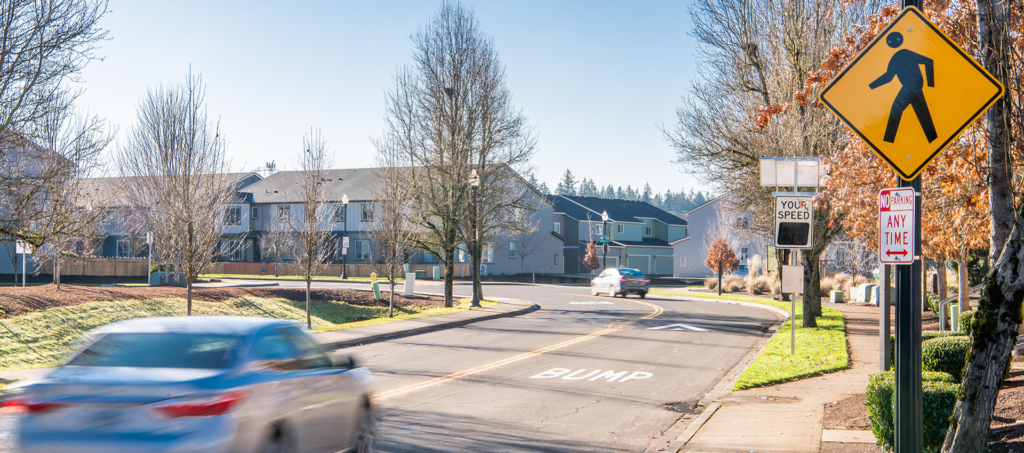
Vancouver’s Neighborhood Traffic Calming Program
The Neighborhood Traffic Calming Program allows community members to champion projects for their neighborhood. These projects help reduce vehicle speeds and improve neighborhood safety and livability. Through a competitive process, project locations are ranked, selected and awarded funding and implementation each program year. Program applications are accepted from early January through the end of February using an online submission form. The program is closed to new application submissions.
The Neighborhood Traffic Calming Program uses City staff and the Transportation and Mobility Commission for program review and guidance of the program. The Transportation and Mobility Commission is the Council-appointed body that advises on the Neighborhood Traffic Calming Program, in addition to other City-managed transportation programs. Program staff are available to support community members seeking to participate in the Neighborhood Traffic Calming Program. Contact us at TrafficCalmingProgram@cityofvancouver.us to learn more and see below for additional program resources and traffic calming options.
Program Details
Program Proposal Guidelines
- Vancouver residents are encouraged to submit traffic locations and concerns for program consideration. Final traffic calming elements are determined by City staff to ensure suitable devices are being proposed for specific streets.
- Residents/neighborhood associations may submit only one application per program year for their neighborhood area.
- Applications are accepted from apartment complexes or multi-family unit representatives, but will not be accepted from businesses, organizations, institutions or schools.
- Each project location must have a community member to champion the project through the review and selection process. A project location will not be considered without a project proponent.
- Infrastructure projects, where traffic calming elements might be added within the street right-of-way, are limited to residential and collector arterial streets.
- Principal arterial streets are not included in the program. Principal arterials are reviewed, evaluated and considered through other City programs.
- All project locations must meet speed and volume criteria and demonstrate neighborhood support for the project.
- Projects from previous years that were not selected due to low ranking or funding restraints will not be rolled over into the next year’s project selection process. Please consider applying again for this year’s program.
Call for Projects (January – February)
Interested residents must submit an official request through the Neighborhood Traffic Calming Program online application submission form between January 2 and February 28. A proposed project location must have a project champion to be considered.
If a proposed project is moved forward in the program process as part of the top-scoring project locations, project proponents will work directly with City staff during the year. Project champions must discuss project elements with neighbors who may be impacted by the proposed project if the project location is selected for funding.
Initial Review / Speed and Volume Counts (March – April)
City staff will conduct initial internal review of the proposed projects. Project locations meeting initial requirements will move forward, and speed and volume counts are completed to determine if the proposed location meets minimum thresholds for traffic speeds and volumes. Minor arterials are only eligible for signing/striping projects, not for in-street infrastructure projects.
Speed and volume requirements
| Street Category | Speed | Volume |
| Minor Arterials | 85% speed is 5 MPH or more over posted limit | > 1,500 vehicles per day |
| Collector Arterials | 85% speed is 5 MPH or more over posted limit | > 1,500 vehicles per day |
| Local Streets | 85% speed > 30 mph | > 500 vehicles per day |
- All projects must meet speed and volume thresholds to be eligible for the program. City staff may use discretion in applying the volume threshold based on conditions on the street. Staff from the City’s Public Works Department, Community Development Department, Police Department and Fire Department review projects that meet these thresholds to ensure project proposals include appropriate engineering solutions to traffic issues without negatively impacting emergency response. A proposed project location not approved by Police, Fire or Public Works Departments will not move forward in the program.
- For speed and volume thresholds, the 85th percentile is a traffic engineering standard used to determine the predominant speed for a street. Speed and volume counts are considered valid for three years. Unless there’s been a significant change to the street and the land around it, project proponents must wait three years to request new counts for their project location.
City Evaluation (April – May)
City staff will evaluate and rank the projects based on a set of objective criteria that include: speed, volume, sidewalks, mobility lanes, vicinity to school, transit/school bus stops, equity index and collision history. The City’s top scoring projects will be selected for program consideration with further reviewed and evaluation.
Further Evaluation and Ranking (June – September)
City staff will use the summer months to further review and analyze the top scoring projects identified for program consideration. Project proponents will be notified and work directly with city staff during the process.
Final Project Ranking and Funding (October)
A final project ranking list will be presented in October. The prioritized project list is matched up with available program funding to determine how many projects will be awarded funding. Due to limited program funding, not all projects will be chosen.
If a project includes infrastructure improvements in the street right-of-way, resident input surveys are required to determine neighborhood support. The resident input survey will be conducted after a project is selected. Program staff will work directly with project proponents to complete this step.
Project Implementation (Typically the Following Year)
City staff will connect with proponents for funded projects to share proposed design elements. Any feedback received through this review will be used to make final adjustments and changes to the design plans. The City will schedule the project for implementation, typically the year after receiving funding. Projects with more complex traffic calming elements may take longer to design and install.
Program Funding
The Neighborhood Traffic Calming Program is funded through a combination of Real Estate Excise Tax (REET), Transportation Benefit District (TBD) fees and multiple other revenue sources, providing a 2025 approximate budget of $300,000. Project costs are coordinated through several different strategies and partnerships within City departments to maximize cost efficiencies.
Program History
Traffic Calming Projects: 2025 & 2024
In 2013, the Neighborhood Traffic Calming Program was revitalized, and over the last 10 years, more than 40 safety and traffic calming projects have been funded and implemented. Take a look back at the past 10 years of Vancouver’s Traffic Calming Program.
2025 Projects
- Northeast 49th Street, from Northeast 122nd Ave. to Northeast 137th Ave. in the North Image neighborhood
- Brandt Road, from Mill Plain Blvd. to 18th St.in the Harney Heights and Maplewood neighborhoods
- E. McLoughlin Boulevard, from E Street to Interstate 5 in the Arnada neighborhood
2026 Projects
Grand Boulevard, from E. 25th Street to E. 30th Street (Rose Village and Fourth Plain Village neighborhoods)
2024 Projects
- Northeast 137th Avenue, from Northeast 4th Street to Northeast 9th Street
in the Emerald Landing Neighborhood - Northwest Lincoln Avenue, from Northwest 39th Street to Northwest 58th Street in the Lincoln and Northwest Neighborhoods
- East Evergreen Boulevard, from North Grand Avenue to North Blandford Drive in the Edgewood Park Neighborhood
- Northeast 82nd Avenue from Northeast 54th St. to Northeast 58th St. in the Van Mall Neighborhood
2024 Before and After Photos
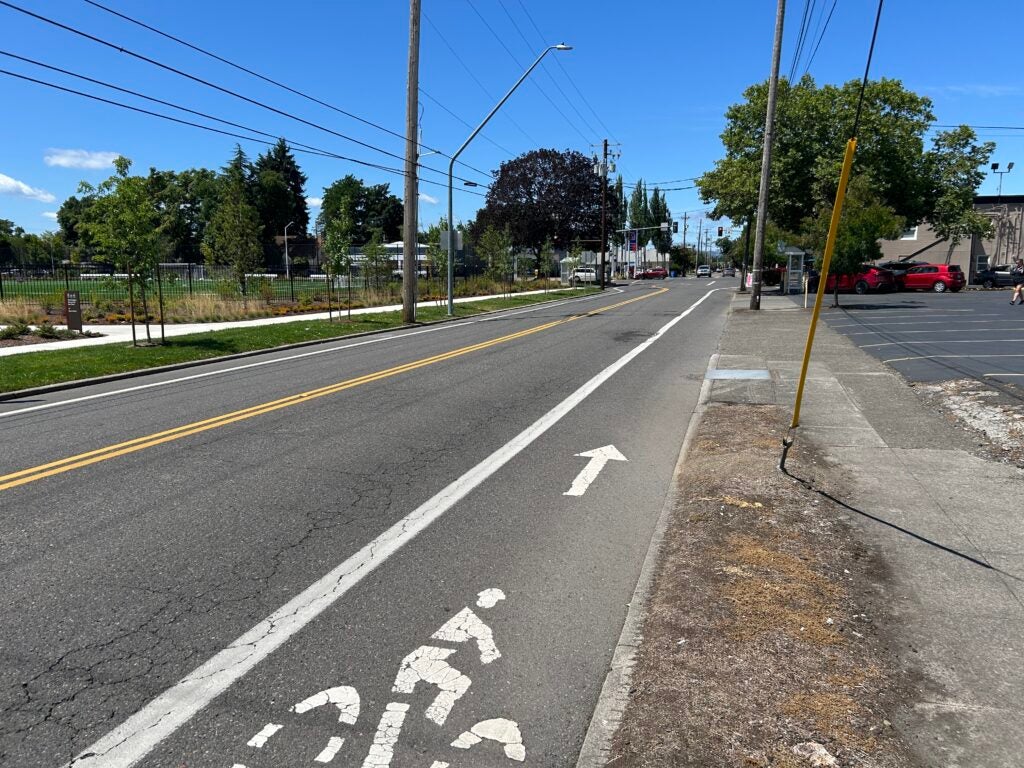
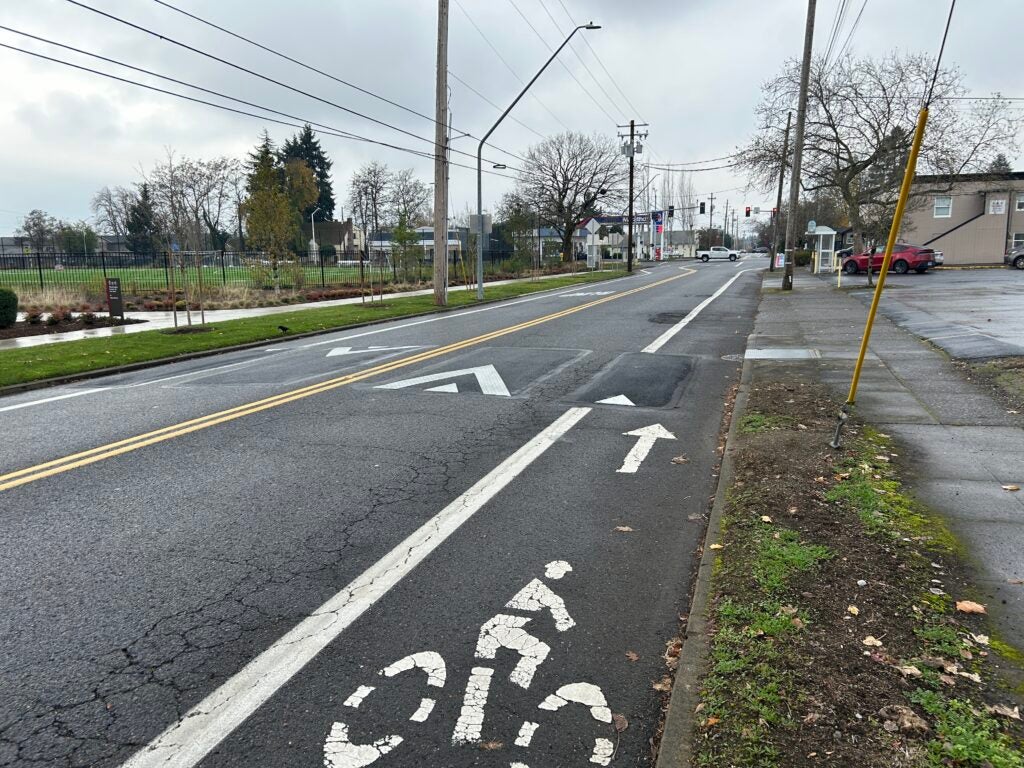

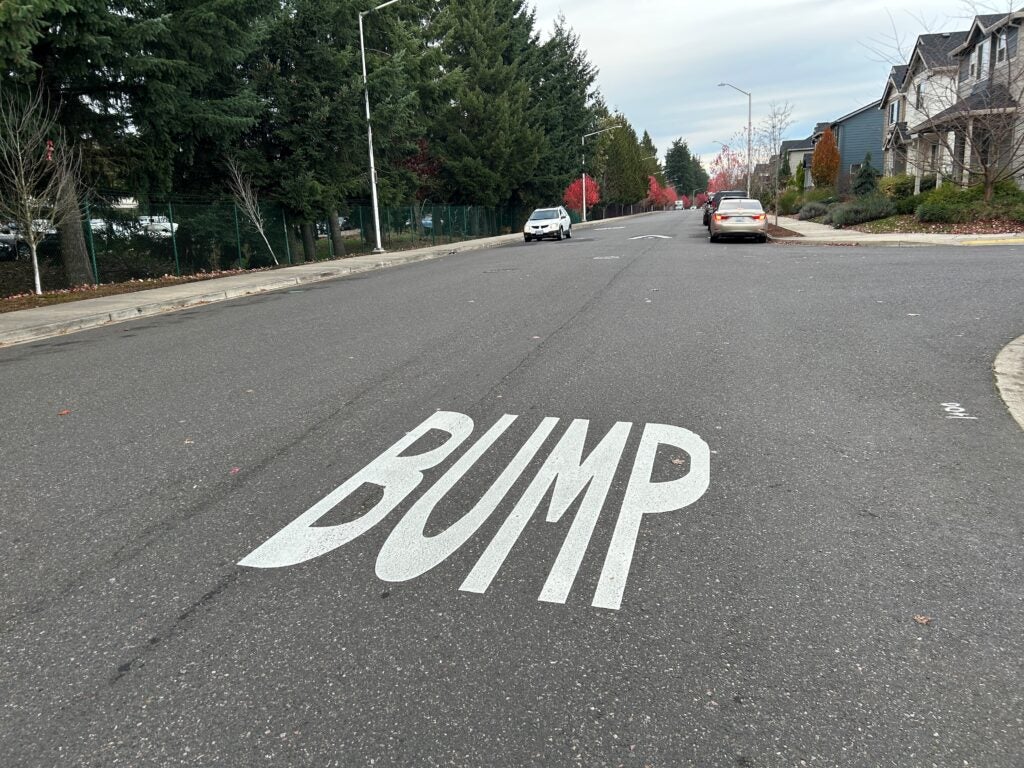
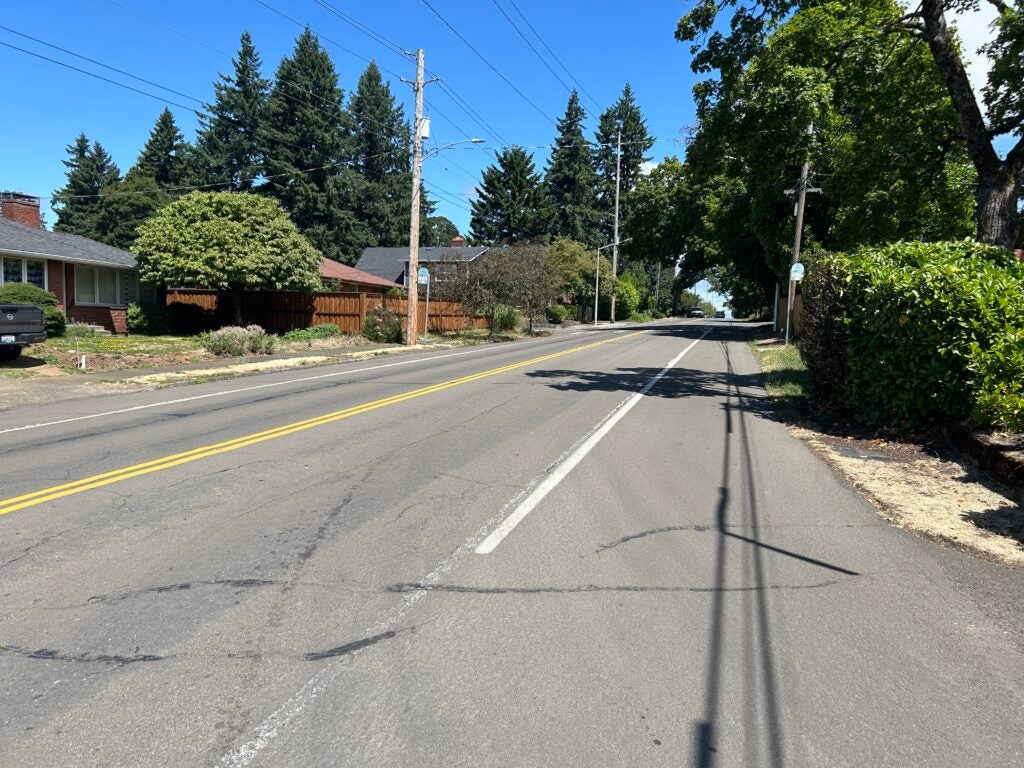
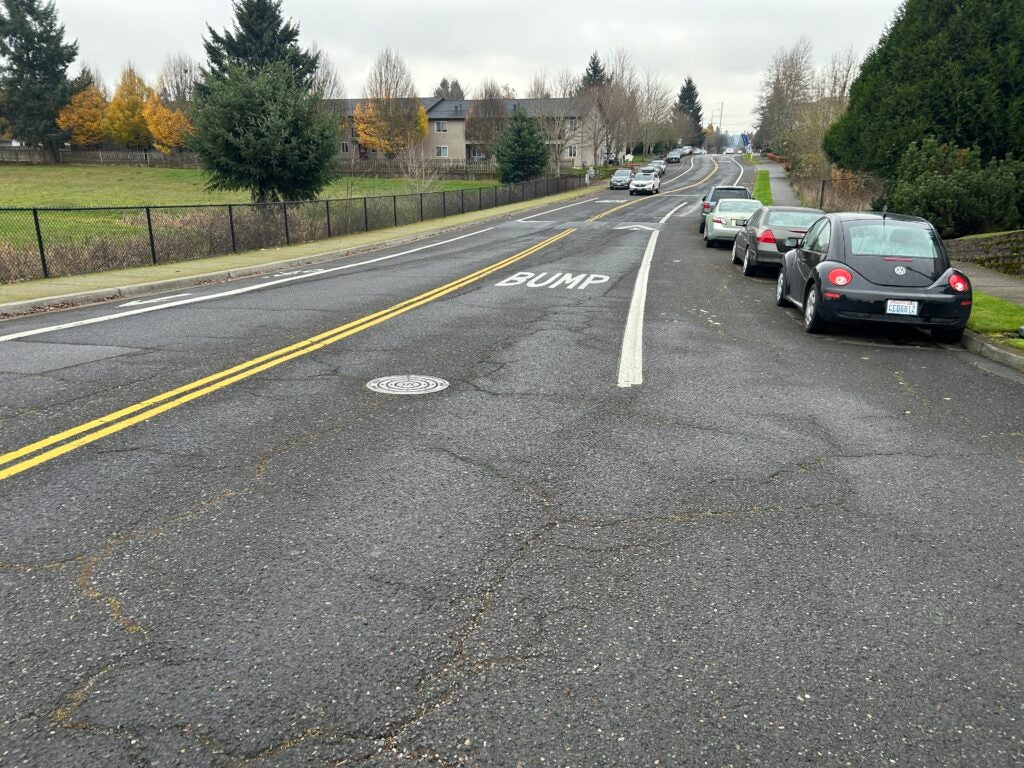

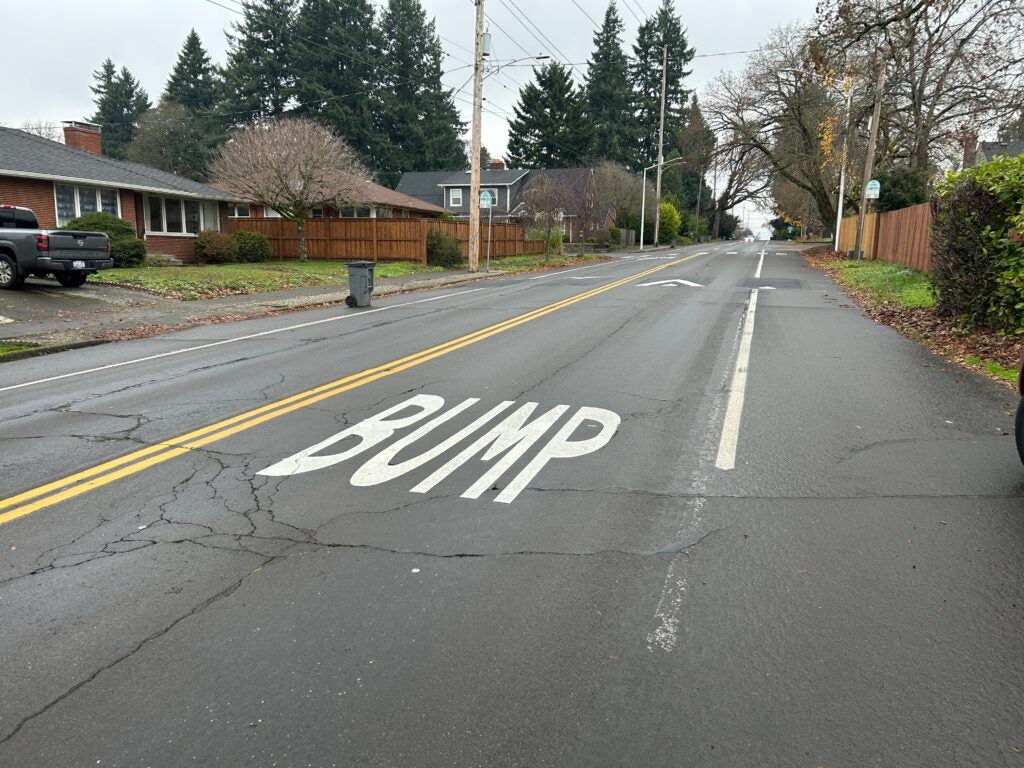
Program Background
Vancouver community members often express concerns of vehicular speeding and their desire to increase traffic safety, especially in local neighborhoods. The City of Vancouver has offered dedicated support and assistance for traffic calming for over twenty years.
We launched the revitalized Neighborhood Traffic Calming Program in March of 2013, with tips and possible project opportunities for residents seeking to slow local traffic while creating a more livable community. In 2010, the Neighborhood Traffic Management Program was phased out briefly due to limited resources and budget shortfalls, but we’ve continued to look for innovative ways to help neighbors address traffic and speeding concerns. Devoted efforts have led to the Neighborhood Traffic Calming Program we have today.
Program Resources
Traffic Calming Resources
Review the resources and information below to help you and your neighbors slow or calm residential traffic.
Submit concerns to Vancouver Police Department’s Traffic Complaint Hotline
Use VPD’s Traffic Hotline or Traffic Complaint Form to submit your concerns. Both are maintained by the Vancouver Police Department and allow residents to record information regarding specific traffic issues. In your message, provide the location of the problem, date and time (include a 30 minute to 1 hour window when the issue occurs). Call the Traffic Hotline at 360-487-7402 or submit your traffic incident or complaint online. This form is for VPD use and is not directly connected to the Neighborhood Traffic Calming Program.
Work with neighbors
Community members are encouraged to connect with their City-recognized neighborhood association to identify problem areas and concerns. You may pursue traffic calming solutions on your own or with neighbors on your street who express interest in helping.
Place a Free Slow Down Yard Sign
Free yard signs are available for Vancouver residents to place in front of their homes as a reminder to passing motorists to obey posted speed limits. The signs are designed to be placed on private property, typically in front or side yards, and act as an educational and awareness tool. Signs are available for individual use within the City of Vancouver limits only and are offered in English, Spanish or Russian. Use this interactive map to determine if your street is within City limits.
Pick up free signs at Vancouver City Hall, 415 West 6th Street. Drop by during the week – the lobby is open from 8 a.m. to 5 p.m., Monday through Friday. Check in at the security desk and get a couple of signs for your street.
Paint a Street Mural
Street murals can help calm traffic by adding visual interest to a neighborhood street or intersection. Often, residents come together with an idea to paint a mural or design on the roadway to promote a sense of community pride, belonging, and fun in the neighborhood.
Participate in the City’s Neighborhood Traffic Calming Program
Vancouver’s Neighborhood Traffic Calming Program helps residents apply for funding through a competitive process to slow neighborhood traffic. The program encourages community members to take the initiative when seeking traffic calming solutions for their neighborhoods. This program is the process through which neighbors with traffic concerns can champion a project (like speed cushions or speed radar feedback signs) to evaluate traffic conditions at their location and then work with City staff to determine the appropriate design or community solution to address issues. The program accepts applications during the first part of each year, so please watch this page for details.
General Questions
Contact staff at TrafficCalmingProgram@cityofvancouver.us.

